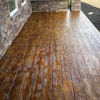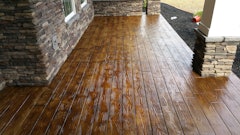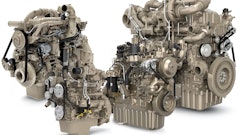President Trump’s Feb. 28 executive order directing the withdrawal of the controversial “Waters of the United States” (WOTUS) rule removes an unnecessary obstacle that would have delayed transportation improvement projects, the American Road & Transportation Builders Association (ARTBA) says.
At issue for the transportation construction industry is how the Obama Administration’s U.S. Environmental Protection Agency (EPA) attempted to redefine what collections of water constitute the WOTUS and are therefore subject to federal authority. Before EPA issued the rule, ARTBA told the agency on multiple occasions that “roadside ditches are not, and should not be regulated as, traditional jurisdictional wetlands as they are not connected water bodies and they contribute to the public health and safety of the nation by dispersing water from roadways.”
The rule, however, did not categorically exempt roadside ditches from federal jurisdiction. Instead, the EPA, in a regulatory overreach, decided a litany of qualifications must be met before a roadside ditch can be deemed exempt from federal permitting requirements.
ARTBA explained to EPA such a piecemeal approach would add another layer of burdensome permitting requirements, create confusion and increase permitting delays for transportation projects. The WOTUS rule, the association said, would also likely be used as a litigation tool to delay projects and, in the process, make them more expensive for taxpayers.
Subsequently, ARTBA, in addition to numerous other trade associations and state governments, sought relief from the federal courts. As a result of that litigation, the WOTUS rule was stayed nationwide.
It’s unclear how the Feb. 28 executive order will impact future federal court proceedings. The association said it plans to work with EPA Administrator Pruitt to craft a new rule that strikes the proper balance between necessary regulatory protection and the nation’s infrastructure needs.
ARTBA: Trump Executive Order on Waters of the U.S. Rule Beneficial to Transportation Permitting Process
Feb 28, 2017
Latest in Home
Universal Expectations at The ARA Show 2026
December 19, 2025
Beyond The Refinery Fence: Fueling The Squeeze
December 18, 2025















